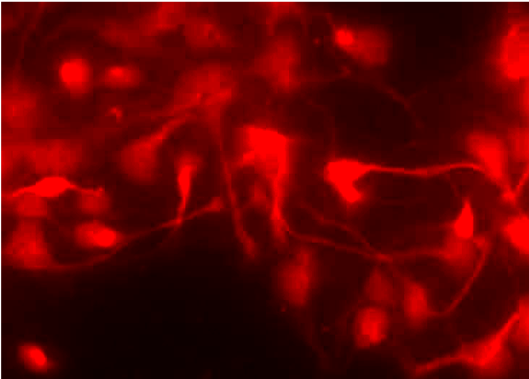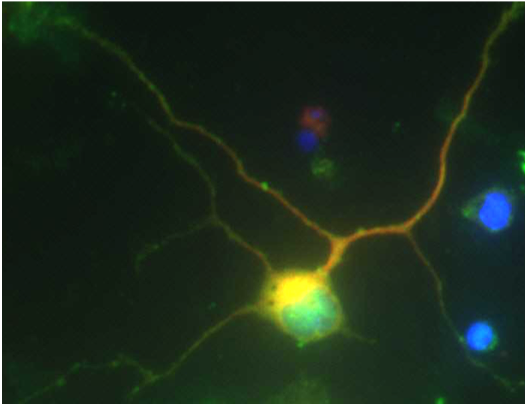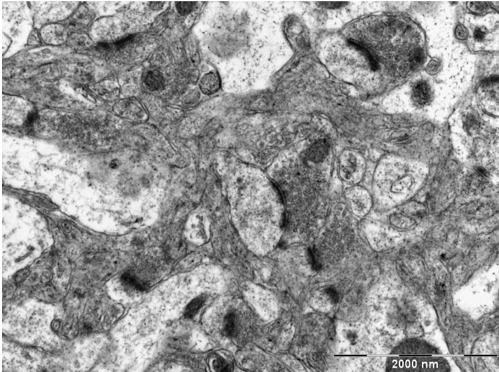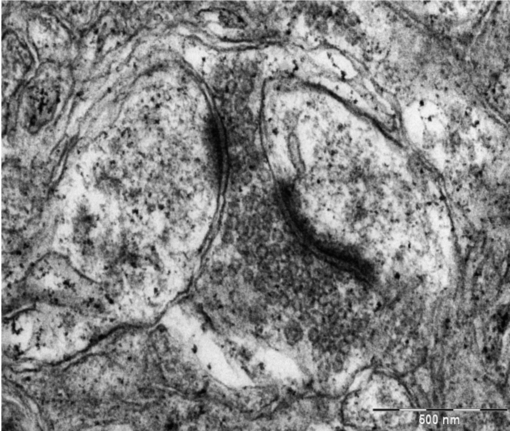Madepalli Lakshmana, Ph.D., is an expert in Alzheimer’s disease (AD) with more than twenty years of experience in the field of neurodegeneration research. Lakshmana acquired basic concepts and advanced knowledge on the brain and nervous system through mandatory course work during MS, M.Phil, and Ph.D. training programs. One major focus of Lakshmana’s research is to identify molecules and pathways responsible for enhanced Aβ generation and hyperphosphorylated tau in models of AD so that those molecules can be targeted for the therapeutic benefit of AD patients. Towards this goal, Lakshmana has identified RanBP9 in a large protein complex that includes LRP, APP, BACE1, and COPS5. By generating several lines of transgenic and knockout mouse models, he could demonstrate that each one of this protein complex plays a crucial role in the amyloidogenic processing of APP and Aβ generation. After joining FIU in 2018, he has expanded his research interests to include other neurodegenerative diseases such as amyotrophic lateral sclerosis (ALS) for which also the molecular basis for neurodegeneration is still elusive.
Research interests
With the very disappointing failures of most of the clinical trials for AD based on the modulation of single target mechanisms such as Aβ, Dr. Lakshmana’s current research focus is to target complex pathways that are able to simultaneously modulate the multiple processes of neurodegenerative cascade triggering a synergistic response for a viable therapeutic approach. Since microglia activation-induced neuroinflammation or loss of synapses correlates better with cognitive dysfunction in AD than Aβ or plaque load, multifactorial and heterogeneous diseases like AD require the simultaneous modulation of multiple targets for curative treatment. Therefore, his focus now is to modulate adult hippocampal neurogenesis (AHN), endocannabinoid system (ECS), autophagy-lysosome pathway (ALP), and epigenetic pathways which are well--known to exert pleiotropic activity including not only on Aβ and hyperphosphorylated tau but also on the AHN, synaptic integrity and neuroinflammation. By modulating these pathways, Dr. Lakshmana’s long-term goal is to develop Multi-Target Directed (MTD) compounds for AD and other neurological disorders.
Regenerative medicine
Now there is unequivocal evidence that continuous adult hippocampal neurogenesis (AHN) and their integration into hippocampal circuitry is necessary for proper learning and memory and plasticity . Given that AHN is impaired even before the onset of AD pathology, and also because decline in neurogenesis strongly associate with cognitive deterioration during aging, coupled with the evidence that blocking neurogenesis in Alzheimer’s mice shortly after birth leads to more pronounced cognitive deficits later in life, the study of potential pathways to influence AHN is crucial for the development of AD therapy. To accomplish this, Dr. Lakshmana has focused on the autophagy-lysosome pathway (ALP) and the endocannabinoid system (ECS), both of which are known to critically regulate AHN. The CB1 receptors are the most abundant G protein-coupled receptors in the mammalian brain, and they are also expressed in the neural stem cells (NSCs) which positively regulate neurogenesis and synaptic plasticity in the subventricular zone (SVZ) and hippocampal dentate subgranular zone (SGZ).
Dr. Lakshmana’s interest is to use small molecule modulators of CB1 and CB2 receptors to enhance AHN and thereby prevent memory decline in models of AD. Given the failure of clinical translation of promising preclinical results into successful therapy, Dr. Lakshmana also utilizes induced pluripotent stem cell (iPSC) technology to provide a nearly unlimited amount of mature neurons induced from iPSCs derived directly from AD patients’ skin fibroblasts. This unprecedented iPSC technology is expected to enable successful screening and triage of hit compounds prior to in vivo testing.

Robust growth of AD patient fibroblast-derived iPSC-neurons

A mature iPSC-derived neuron from AD patient fibroblasts; A merged image of doublecortin (green) and β-tubulin iii (red)
Autophagy-lysosome pathway (ALP)
Advancing age is the most prevalent risk factor for AD because of the decline of cellular protein quality control processes in the brain as evidenced by the massive accumulation of multiple protease-deficient axonal lysosomes and autophagosomes in the dystrophic neurites of AD brains which may be responsible for eliciting microglial activation, neuroinflammation, loss of synapses and reduced AHN. Indeed, released lysosomal contents can mimic viral particles and activate innate immunity, or release metabolites and cathepsins that can be sensed as intracellular danger-associated molecular patterns (DAMPs) and elicit inflammation. Thus lysosomal defects may be primarily responsible for AD pathogenesis. To counter ALP defects in AD, Dr. Lakshmana has successfully generated flag-TFEB transgenic mice as well as conditional TFEB knockout mice to assess the role and potential mechanism of TFEB in mitigating neuroinflammation, in rescuing loss of synapses and restoring the reduced NPCs proliferation, thereby increase the longevity of aged as well as mouse models of AD.
Restoring synaptic integrity
Another major focus of Dr. Lakshmana’s research is to investigate on the precise mechanisms that trigger synaptic dysfunction in AD, as well as ways to restore the loss of synapses that occur at the early stages of the disease. A wide-ranging methodologies that includes immunoblot quantitation of synaptic proteins, quantitation of synapses by immunohistochemistry (IHC), synaptosomes from mouse and human brain tissue, iPSC-derived neurons, real-time synaptic vesicle release using optogenetic approach and synaptopHluorin, axonal transport and transmission electron microscopy (TEM) for the ultrastructural evaluation of synapses, synaptic vesicles and post-synaptic density are used.
Assay development and throughput screening
The overall goal of Dr. Lakshmana’s laboratory is to develop disease-modifying therapy for AD, ALS, and other neurological disorders. To accomplish this goal, a biological assay to identify the activators of sAPPα (to enhance non-amyloidogenic processing of APP) was developed using AlphaLISA technology, and a high throughput screening (HTS) has identified several hits and lead compounds which are now being developed. A high-content screening (HCS) assay was also developed using EGFP-TFEB construct in HeLa cells (to activate autophagy), which has also resulted in the identification of several lead compounds that dephosphorylate TFEB and activate ALP. Since HDAC2 activity is inversely related to memory, another assay on HDAC2 using AlphaLISA and HDAC-Glo™ technology was also successfully developed and utilized. Dr. Lakshmana is currently interested to develop assays against biological targets to reduce neuroinflammation. By collaborating with several synthetic and organic chemists, Dr. Lakshmana utilizes thousands of hetero and acyclic compounds for HTS and HCS screenings to identify hits and lead compounds for successfully identifying disease-modifying therapy for AD and other neurological disorders.

Ultrastructure of synapses in the mouse brain as seen by TEM

TEM image showing synaptic vesicles and post-synaptic density
Publications (selected out of 54)
- Yamamoto F, Taniguchi K, Mamada N, Tamaoka A, Kametani F, Lakshmana MK, Araki W. (2019). TFEB-mediated Enhancement of the Autophagy-lysosomal Pathway Dually Modulates the Process of Amyloid β-Protein Generation in Neurons. Neuroscience 402:11-22.
- Tanokashira, D., Mamada, N., Yamamoto, F., Taniguchi, K., Tamaoka, A., Lakshmana, MK., Araki, W. (2017). The neurotoxicity of amyloid β-protein oligomers is reversible in a primary neuron model. Mol. Brain. 10(1):4.
- Wang H, Wang R, Xu S, Lakshmana MK. (2016). Transcription Factor EB Is Selectively Reduced in the Nuclear Fractions of Alzheimer's and Amyotrophic Lateral Sclerosis Brains. Neurosci. J. 2016;2016:4732837.
- Tanokashira D, Motoki K, Minegishi S, Hosaka A, Mamada N, Tamaoka A, Okada T, Lakshmana MK, Araki W. (2015). LRP1 Downregulates the Alzheimer's β-Secretase BACE1 by Modulating Its Intraneuronal Trafficking. eNeuro. 22;2(2).
- Wang H, Wang R, Carrera I, Xu S, Lakshmana MK. (2016). TFEB Overexpression in the P301S Model of Tauopathy Mitigates Increased PHF1 Levels and Lipofuscin Puncta and Rescues Memory deficits. eNeuro 2016 May 23;3(2)
- Wang R, Wang H, Carrera I, Xu S, Lakshmana MK. (2015). RanBP9-dependent increased Aβ levels, amyloid plaque burden and learning deficits in the APΔE9 transgenic mice overexpressing COPS5. J. Biol. Chem. 290(14):9299-309.
- Wang, H., Nefzi, A., Fields, GB., Lakshmana, MK., Minond, D. (2014). AlphaLISA-based HTS Assay to Measure Levels of Soluble APPα. Anal. Biochem. 459, 24-30.
- Wang, R., Palavicini, JP., Wang, H., Maiti, P., Bianchi, E., Xu, S., Lloyd, BN., Dawson-Scully, K., Kang, DE., Lakshmana, MK. (2014). RanBP9 Overexpression Accelerates Loss of Dendritic Spines in a Mouse Model of Alzheimer’s Disease. Neurobiol. Dis . 69C, 169-179.
- Subramanian, M., Hayes, CD., Thorp, E., Matshushima, GK., Herz, J., Lakshmana, MK and Tabas, I. (2014). A multi-protein complex of Axl, LRP-1, and RanBP9 mediates dendritic cell efferocytosis and antigen cross-presentation. J. Clin. Invest. 124(3):1296-308.
- Wang, H., Xu, S., Lakshmana, MK. (2014). RanBP9 overexpression reduces dendritic arbor and spine density in the transgenic mouse brain. Neuroscience. 265: 253-262
- Wang, H., Dey, D., Carrera, I., Minond, D., Bianchi, E., Xu, S., Lakshmana, MK. (2013). COPS5 (Jab1) protein increases b-site processing of amyloid precursor protein and amyloid b peptide generation by stabilizing RanBP9 protein levels. J. Biol. Chem. 288, 26668-77.
- Roh, SE., Woo, JA, Lakshmana, MK., Uhlar, C., Ankala, V., Boggess, T., Liu, T., Hong, YH., Mook-Jung, I., Kim, SJ., Kang, DE. (2013). Mitochondrial dysfunction and calcium deregulation by the RanBP9-cofilin pathway. FASEB J. 27(12):4776-89.
- Hayes, CD., Dey, D., Palavicini, JP., Wang , H., Patkar, KA., Minond, D., Nefzi, A and Lakshmana, MK. (2013). Striking reduction of amyloid plaque burden in an Alzheimer’s mouse model after chronic administration of carmustine. BMC Medicine . 11, 81.
- Lakshmana, M.K., Hayes, C.D., Bennett, S.P., Bianchi, E., Reddy, K.M., Koo, E.H. and Kang, D.E. (2012). Role of RanBP9 in amyloidogenic processing of APP and synaptic protein levels in mice. FASEB J. 26, 2072--83
- Woo, J.A., Jung, A., Lakshmana, M.K., Bedrossian, A., Lim, Y., Bu, J.H., Park, S.A., Koo, E.H., Mook-Jung, I and Kang, D.E. (2012). The pivotal role of the RanBP9-Cofilin pathway in A-induced apoptosis and neurodegeneration. Cell Death Differ. 19, 1413-23
- Woo, J.A., Roh, S-E., Lakshmana, M.K. and Kang, D.E. (2012). The pivotal role of RanBP9 in integrin-dependent focal adhesion signaling and assembly. FASEB J. 26, 1672-81
- Lakshmana M.K., Chung, J.Y., Wickramarachchi, S., Bianchi E., Koo, E.H., Kang, D.E. (2010). A fragment of the scaffolding protein RanBP9 is increased in Alzheimer’s disease brains and strongly potentiates amyloid beta-peptide generation. FASEB J. 24, 119-127.
- Lakshmana M.K., Yoon, I.S., Chen, E., Bianchi, E., Koo, E.H., Kang, D.E. (2009). Novel role of RanBP9 in BACE1 processing of APP and amyloid beta-peptide generation. J. Biol. Chem. 284: 1863-1872.
- Yoon, I.S., Chen, E., Busse, T., Repetto, E., Lakshmana, M.K., Koo, E.H., Kang, D.E. (2007). Low- density lipoprotein receptor-related protein promotes amyloid precursor protein trafficking to lipid rafts in the endocytic pathway. FASEB J. 21: 2742-2752.
- Kumada, T., Lakshmana, M.K., Komuro, H. (2006). Reversal of neuronal migration in a mouse model of fetal alcohol syndrome by controlling second-messenger signaling. J. Neurosci. 26: 742-756.
